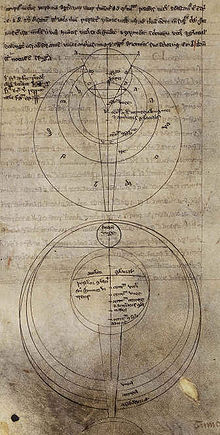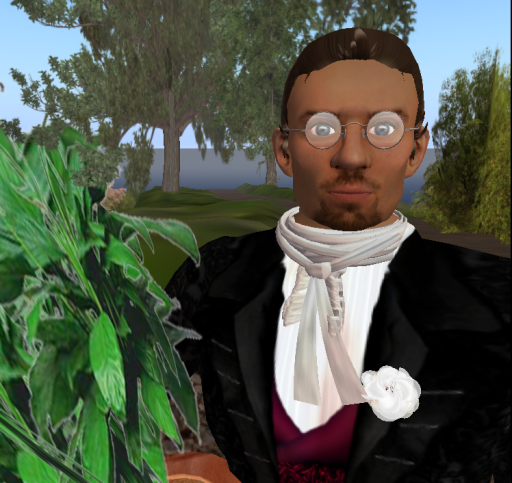Eleas LeRoux, Year of Our Lord 178_
Does life arise all around us all the time, from nothing? The theory that it does is called 'spontaneous generation' or 'equivocal generation'. Aristotle is among its proponents, and it has been the prevailing paradigm for two thousand years. When asked for proof, the most common example used is that of, with apologies to anyone disturbed by the image, maggots. These larvae seem to appear from nowhere at a certain point in the decay of meats. In the 17th and 18th-century scientific communities ((the question is more or less laid to rest by the end of 19th century with the fine work of Louis Pasteur)), this question is still open. Many of us have come to believe, at least, that not all life is spontaneously generated ... we know that many forms of life, including our own, have parents, i.e. is generative.
The late Francesco Redi, a Tuscan Renaissance man, poet, academician, physician to the legendary house of De' Medici, less than one hundred years ago conducted precise and methodical experiments to do with abiogenesis. He placed objects in jars, including fish and meat, and covered half of said jars with gauze, leaving the others open to the air. He observed that when flies could enter the jars, presumably to deposit their eggs, maggots would soon appear. When the jars were covered, the fish and meats would rot or dry out without any other effects. He then tried placing dead flies and live flies in jars, noting that the live flies produced maggots and the dead ones did not. After many careful experiments, he concluded that life comes from life -- not from the ether, but from parents of some kind, even when those parents are unseen to us.
There are still those, however, who argue that life can come from dung or air. They explain Redi's and other's experiments by explaining that jars restrict the flow of air, and covered jars restrict that flow further.
Given my recent experiments with optics, and my observation of insects, larva, and eggs, I am further convinced that life is not spontaneous, that it is generative. I cannot prove that there is no life that does not simply appear, but I believe that any life must have some heritage, that where there is life there are parents from whom it springs.
~Eleas LeRoux
Posted in: default
| 16 comments
Having been engaged in close study of small objects, and suffering from less than perfect eyesight as I do, I was inspired by some passages I came across in a rare copy of the English Friar Roger Bacon's work, the Opus maius, which describes not only the workings of the eye now more or less familiar to us but also the mechanical art of magnification using lenses. These papers were copied directly from those Bacon provided for Pope Clement IV around 1265.
Bacon indicates some debt to Alhazen and Ibn-Sahl. It appears that such lenses may have been in use for centuries already, and it is only the difficulty in crafting them and the associated cost that keeps them from being a part of every student's basic equipment.

Bacon indicates some debt to Alhazen and Ibn-Sahl. It appears that such lenses may have been in use for centuries already, and it is only the difficulty in crafting them and the associated cost that keeps them from being a part of every student's basic equipment.
((The inventor of the magnifying glass in the Western world is likely Roger Bacon of the Order of Friars Minor, circa 1214-1294, an English philosopher and Franciscan Friar, lecturer at the University of Paris, master at Oxford University, a deeply religious person also sometimes also named as the father of modern science. Certainly, he was a champion of scientia experimentalis, the use of experiments to discover such truths as can be discovered as opposed to the reliance on prior authority or allegedly divine revelation.))
I am aware of experiments with larger scale magnification as well, so called 'microscopes', a neologism derived from the Greek, which were made in the Netherlands in the 1590s, by Galileo in 1625, and, of course, famously by van Leewenhoek, the discoverer of micro-organisms, in 1676. My experiment has to do with creating microscopes and magnification lenses for 17th century France.
I have completed two prototypes, a handheld magnifier and a simple microscope, and will offer examples them both for sale as a set in my shop for a modest fee.
By my hand, on this date,
~Eleas LeRoux
Posted in: default
| 3 comments
I received an urgent message, delivered by a mounted courier, from the pen of my colleague, Dr. Pekel, and calling for my witness to an examination of the body of a woman found in the waters of the Venetian canal.
It was my initial suspicion that this person might have drowned, but the good doctor pointed to discoloration of the body unnatural in either salt or fresh water drowning and to other signs that may indicate foul play.
Discoloration was present across the entire skin and thus cannot be attributed to makeup or a topical treatment.
The blood, too, was discolored, presented as a odd pink. This is not due to a contamination of the blood with water as a result of drowning, as some unfamiliar with the writings of Galen, Vesalius, and of the brilliant Dr. William Harvey, physician to both King James and King Charles I of England, might suggest. Instead, it points to an imbalance in the body prior to drowning, one that would likely prove fatal.
To test this hypothesis, after the good doctor Pekel sectioned the stomach and bowel with great precision, I removed a sample of the contents for further testing. It was clear to him from examination of the lining of the stomach that this was indeed a poisoning. He could narrow down the type of poison to a very short list.
The initial test to precisely identify the poison at work was simply to float the sample of the excrement in a bucket of water and carefully stir it until its elements came apart each from the other, the heaviest to fall to the bottom and the lightest to float to the top. Each group was then removed, strained through a cloth to remove water, and visually inspected. There was no question regarding the presence of arsenicum, yellow orpiment, among the heaviest precipitants. This is a metallic element, derivative of iron, thus weighty.
Arsenic may be an ingredient in some ladies' makeup and is also prescribed occasionally in tiny doses for some complaints, though I do not personally believe it is of much therapeutic value. The amount present, however, was extraordinary and could not have been incidentally introduced or prescribed without malice. It is a lethal dose, indeed it is a fatal dose several times over. It is as the doctor suspected, an incident that can only be described as wilful murder by poison.
God is my witness that I have acted in good faith here and spared no pains to uncover the facts. The deceased woman is far beyond any salvation offered by the medical arts. The application of science may, though, play a role in bringing the facts to light and a killer to justice.
It was my initial suspicion that this person might have drowned, but the good doctor pointed to discoloration of the body unnatural in either salt or fresh water drowning and to other signs that may indicate foul play.
Discoloration was present across the entire skin and thus cannot be attributed to makeup or a topical treatment.
The blood, too, was discolored, presented as a odd pink. This is not due to a contamination of the blood with water as a result of drowning, as some unfamiliar with the writings of Galen, Vesalius, and of the brilliant Dr. William Harvey, physician to both King James and King Charles I of England, might suggest. Instead, it points to an imbalance in the body prior to drowning, one that would likely prove fatal.
To test this hypothesis, after the good doctor Pekel sectioned the stomach and bowel with great precision, I removed a sample of the contents for further testing. It was clear to him from examination of the lining of the stomach that this was indeed a poisoning. He could narrow down the type of poison to a very short list.
The initial test to precisely identify the poison at work was simply to float the sample of the excrement in a bucket of water and carefully stir it until its elements came apart each from the other, the heaviest to fall to the bottom and the lightest to float to the top. Each group was then removed, strained through a cloth to remove water, and visually inspected. There was no question regarding the presence of arsenicum, yellow orpiment, among the heaviest precipitants. This is a metallic element, derivative of iron, thus weighty.
Arsenic may be an ingredient in some ladies' makeup and is also prescribed occasionally in tiny doses for some complaints, though I do not personally believe it is of much therapeutic value. The amount present, however, was extraordinary and could not have been incidentally introduced or prescribed without malice. It is a lethal dose, indeed it is a fatal dose several times over. It is as the doctor suspected, an incident that can only be described as wilful murder by poison.
God is my witness that I have acted in good faith here and spared no pains to uncover the facts. The deceased woman is far beyond any salvation offered by the medical arts. The application of science may, though, play a role in bringing the facts to light and a killer to justice.
~EL
Posted in: default
| 0 comments


